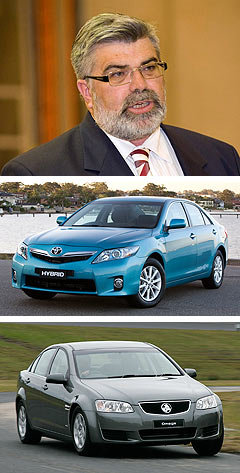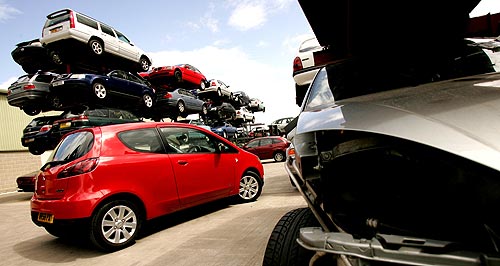News - General News - ScrappageCar rebate benefits to flow offshoreSubsidising imports: Few Australian-made cars are currently able to achieve the required environmental rating to qualify for the proposed scrappage subsidy, meaning that the benefits will largely go to buyers of imported vehicles such as Mitsubishi's Colt (pictured). Scrappage scheme likely to benefit imports over locally manufactured cars8 Nov 2010 By IAN PORTER THE federal government is unable to prevent most of the benefits of its $430 million Cleaner Car Rebate Scheme from flowing offshore. The government is not allowed to make the scheme applicable only to Australian-made cars under the terms of the World Trade Organisation agreement which governs much world trade, said the minister for innovation, industry, science and research, Senator Kim Carr. “I have to work within existing international treaty obligations,” the minister told GoAuto after announcing the six-month deferral of the Cleaner Car Rebate Scheme to July 2011.  From top: Senator Kim Carr, Toyota Camry Hybrid, Holden Commodore Omega. From top: Senator Kim Carr, Toyota Camry Hybrid, Holden Commodore Omega.Germany had the same problem when it ran a scrappage scheme as part of its economic stimulus package after the advent of the global financial crisis in 2008. Angela Merkel’s government had to sit and watch as the economic stimulus flowed out of Germany to other countries. Car sales rocketed under the scheme and the estimates of how many cars would be sold and how much the government subsidy would cost proved way too low. The number of cars sold was originally estimated at 300,000 but ended up reaching two million. The problem was that German car buyers tended to buy cheaper cars made in Eastern Europe, particularly Romania and the Czech Republic, so the economic benefit largely went to those countries rather than Germany. The Australian scheme is linked to environmental performance, but only two Australian-made cars currently achieve the required environmental rating of six under the Green Vehicle Guide system. That is equivalent to emissions of 220 grams of CO2 per kilometre. The cars that qualify are the Toyota Camry range (petrol and hybrid) and the 3.0-litre SIDI Holden Commodore, although there will be more eligible locally built cars by the time the scheme kicks in. Holden’s Cruze and Ford’s EcoBoost Falcon will be on the market and will also qualify – and most likely the Territory diesel – when the deferred Cleaner Car Rebate Scheme is opened. Asked why Australia could not ignore the WTO guidelines, as US president George W Bush did when he banned imports to protect the US steel industry, Senator Carr said Australia “plays in a different league than the US” when it comes to industry assistance measures. “The nature of real-world economics in international trade require us to treat these things with some care,” he said. “Given that we are a small trading country, we do not have the same policy flexibility that the United States has. I have to work within existing international treaty obligations. “We have got to be a lot smarter about ensuring that Australia retains its access to international markets. Remember that over 60 per cent of our vehicle production is actually sent offshore.” The Australian scrappage scheme has benefitted from one mistake made by the Germans, whose scheme was open-ended. The Cleaner Car Rebate Scheme will be capped at 200,000 vehicles over four years. Initially budgeted at €1.5 billion ($A2.07 billion), the government subsidy of €2500 ($A3464) per car eventually consumed €5 billion ($A6.93 billion) of German taxpayer funds as two million cars were sold under the scheme. Capping the Australian scheme at $2000 per car for 200,000 cars gives an indicated subsidy to buyers of $400 million. The extra $30 million in the Government’s total budget of $430 million appears to be earmarked for establishing and administering the scheme to ensure there are none of the rorts and corner-cutting that blighted the houseing insulation scheme. Senator Carr said the local manufacturers had made a lot of progress in reducing fuel consumption and emissions of their cars since the world was caught unawares by the sudden spike in oil prices before the global financial crisis hit. “We’ve actually made very significant improvements through new technologies, and quickly,” he said. “How would you do it without the Green Car industry plan? This industry is huge. “All three manufacturers have responded very well. These have been the worst economic times, so attracting new investment capital is a major achievement.” Under the reduced $900 million Green Car Innovation Fund, Holden has received $149 million to help bring the Cruze into production, Ford has received $42 million to bring the EcoBoost Falcon to market and Toyota has received $35 million to assist with the introduction of the Camry hybrid to the Altona production line. Under the scheme’s guidelines, the companies are required to invest three times what they receive as grants.  |
Click to shareGeneral News articlesResearch General News Motor industry news |














Facebook Twitter Instagram